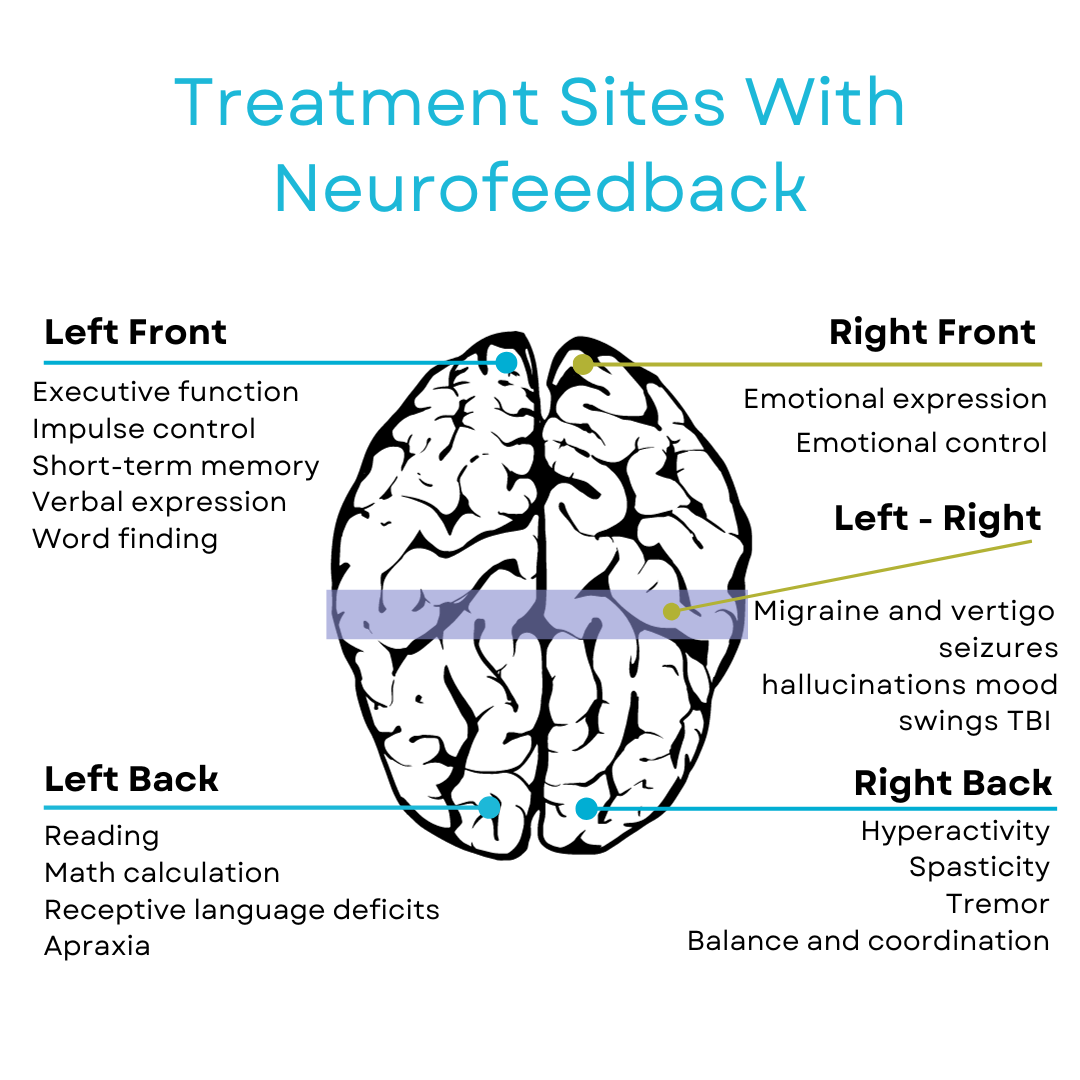Epilepsy & Seizures
Epilepsy is a neurological disorder characterized by recurrent, unpredictable seizures caused by abnormal electrical activity in the brain. These seizures can manifest in various forms, from momentary lapses of awareness to convulsions. Traditional treatments for epilepsy often involve medications to control seizures, but some individuals may experience limited efficacy, side effects, or a reluctance to rely on long-term pharmacological solutions.
Neurofeedback has emerged as a promising alternative or complementary approach for managing epilepsy. This non-invasive technique involves training individuals to regulate their brain activity, particularly in areas associated with seizure control. During neurofeedback sessions, individuals receive real-time feedback on their brainwave patterns, helping them learn to self-regulate and optimize their brain function.

Several studies suggest that neurofeedback can be effective in reducing the frequency and severity of seizures in individuals with epilepsy. By promoting self-regulation of brainwave patterns, neurofeedback aims to modulate abnormal electrical activity and enhance overall brain function. Unlike medications, neurofeedback is generally well-tolerated, with minimal side effects, making it an appealing option for those seeking alternative or adjunctive treatments.
The personalized nature of neurofeedback allows for targeted interventions based on the individual’s specific brainwave patterns and seizure characteristics. While medication may be necessary for some individuals, neurofeedback offers a non-pharmacological approach that can contribute to a comprehensive treatment plan for managing epilepsy. As research in this field continues, neurofeedback holds promise in improving the quality of life for individuals with epilepsy by providing a tailored, effective, and well-tolerated therapeutic option.
Studies
Egner T., Sterman MB. (2006). Neurofeedback treatment of epilepsy: from basic rationale to practical application. Expert Rev Neurother.;6(2):247-57. The treatment of epilepsy using operant conditioning of the sensorimotor rhythm electroencephalogram spans 35 years. Neurophysiological studies indicate that this rhythmic oscillation reflects an inhibitory state of the sensorimotor system. Learning to produce sensory motor rhythm through operant conditioning increases excitation thresholds in thalamocortical circuits, contributing to reduced susceptibility to seizures. This neurofeedback protocol has demonstrated clinical benefits, especially in patients unresponsive to pharmacotherapy, across various independent laboratories. Advances in computer technology now offer cost-effective, high-quality equipment for implementing this treatment.
Lubar, J. F., & Bahler, W. W. (1976). Behavioral management of epileptic seizures following EEG biofeedback training of the sensorimotor rhythm. Biofeedback & Self-Regulation, 7, 77-10 Eight individuals, comprising four males and four females aged 10 to 29, with various types of epilepsy, underwent training to enhance 12-14 Hzeta EEG activity over the Rolandic area. This activity, known as the sensorimotor rhythm (SMR), is thought to be linked to motor inhibitory processes. The patients, presenting different epilepsy types, including grand mal, myoclonic, akinetic, focal, and psychomotor, included three individuals with varying degrees of mental retardation. Using a combination of analog filtering and digital processing, SMR was detected, and feedback (auditory and/or visual) was provided upon detecting 12-14 Hz activity. Additional feedback indicated epileptiform spike activity, slow waves, or movement, inhibiting SMR feedback during their presence. Throughout the treatment, most patients exhibited varying degrees of improvement. Two previously severely epileptic patients achieved seizure-free periods of up to one month, while others developed the ability to mitigate many seizures. Reductions in seizure intensity and duration were observed, along with an increase in SMR amount and amplitude during training. Periodic spectral analyses were conducted, evaluating the effectiveness of SMR conditioning for controlling epileptic seizures based on patient characteristics and seizure types.